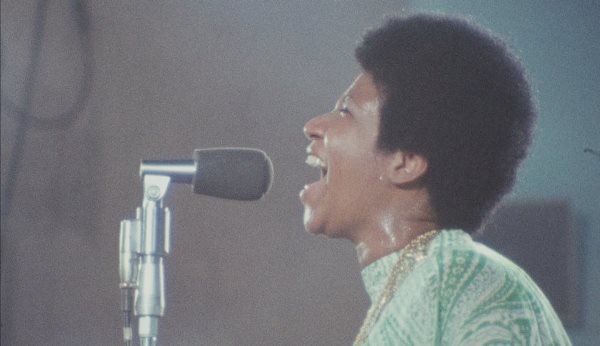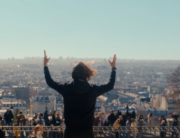In January 1972, director Sydney Pollack, making a documentary for the first time, headed a crew to film Aretha Franklin’s two-night gospel concert at the New Temple Mission Baptist Church in Los Angeles. It was also recorded for her double-album Amazing Grace, still the biggest selling live gospel album and the best-selling LP of her career. However, none of the footage was seen by the public until the film’s premiere at the DOC NYC festival in November. The film was delayed and abandoned because of technical issues. Apparently, the camera rolls were not slated, making it a challenge for editors to sync the audio to the visuals.
In 2015, former record producer Alan Elliott announced that he had completed the project thanks to new technology, and the film was slated to world premiere at that year’s Telluride Film Festival. However, it was withdrawn at the last minute because of a lawsuit brought by Franklin. Ultimately, all of the tangled history and legal wrangling is just noise. There is nothing that warrants controversy. Instead, this is the best posthumous tribute to the singer imaginable and an opportunity to see her at a career peak, just years after she started topping the R&B and pop charts. Already at that time, she is introduced by the Rev. James Cleveland as “the first lady of music.”
As Cleveland reminds the audience, what is being recorded is a religious service—a joyous one—begins with “Wholy Holy,” written by another singer who was raised in the church, Marvin Gaye, whose father, like Franklin’s, was a minister. Cleveland doubles as the MC and a member of the band, often at the piano, and the Southern California Community Choir backs up Franklin, led by Alexander Hamilton. There are the standard gospel numbers (“What a Friend We Have in Jesus”) and arguably the high point of the event, Franklin’s rendition of “Amazing Grace,” as well as her version of Carole King’s “You’ve Got a Friend,” which King had just recorded for her Tapestry album the year before, in a medley with “Precious Lord, Take My Hand.”
The four 16mm cameras capture the collaboration between the singer, the choir, and, to certain extent, the audience, whose feedback is part of the concert. Everyone has a moment. Though their presence is felt through the vinyl, here the concertgoers are integral to Franklin’s performance. Though the clothes and the fashions (especially the singer’s green and white paisley caftan) are obviously of the early ’70s, the music and the performance are timeless. (The occasional use of split screen is also an indication of the era—the film project was initiated by Warner Bros, which had released the split-screen extravaganza Woodstock in 1970.) The cameras’ focus is entirely on the performance, though it’s hard not to miss Mick Jagger in the audience the second night of the concert.
Franklin’s father, Reverend C.L. Franklin, gets up on the podium on the second night and praises his daughter for taking what she has learned from the masters, such as Mahalia Jackson and Clara Ward (siting in the front pew), and turning it into a “synthesis.” He also defends his daughter against those who opposed her move from gospel to R&B: “She has never left the church.” One more fatherly touch: while she performs at the piano, he comes and gently pats her face down with a towel.
The film is fleet and compact as far as concert films go, coming in at only 87 minutes. The onscreen artistry is such that it can rouse a response from what is typically an unresponsive morning press screening. One can only imagine the synergy at a packed house of Franklin fans.
Amazing Grace will be released in early 2019.

















Leave A Comment